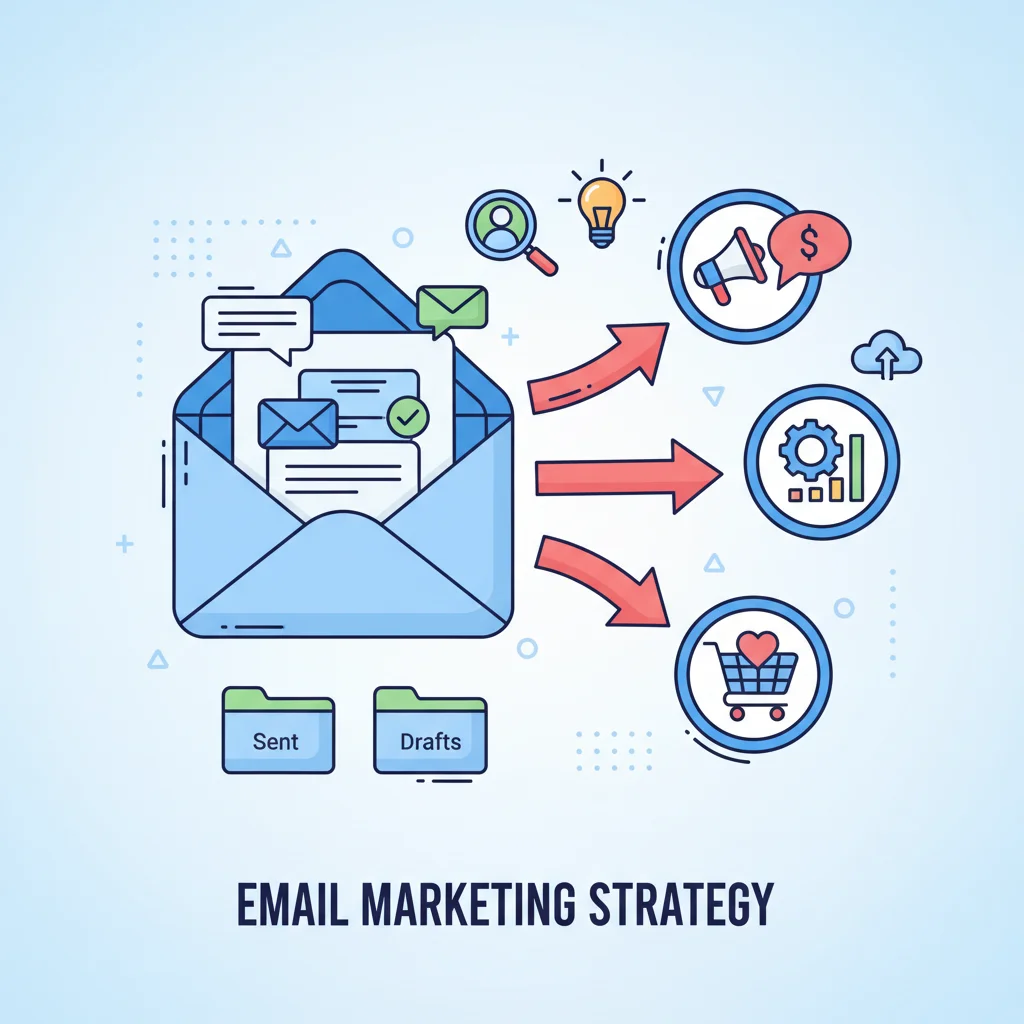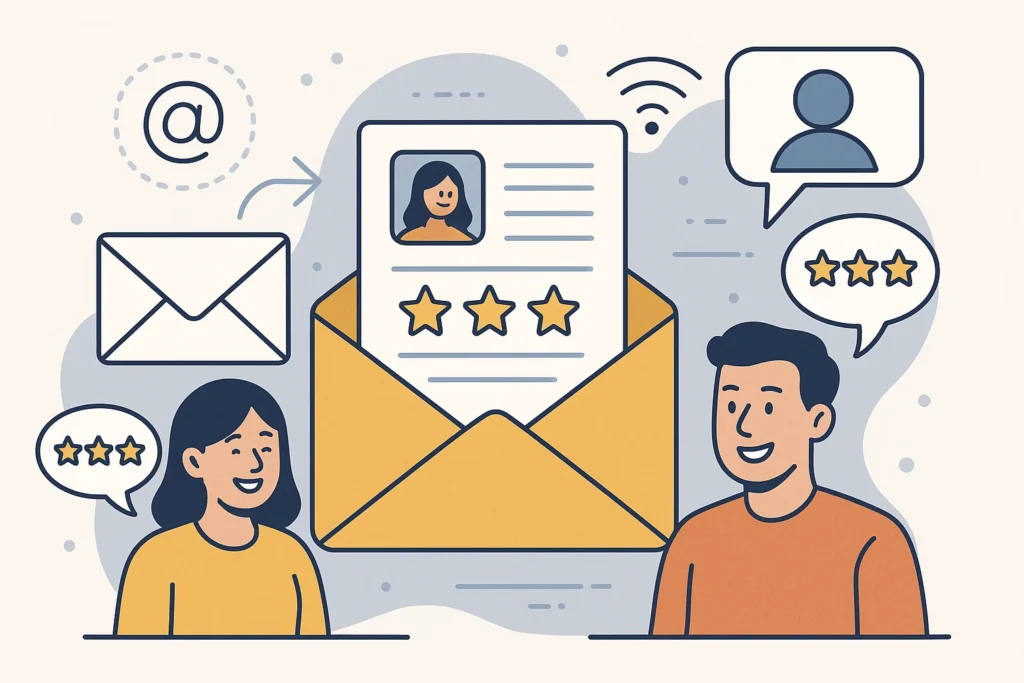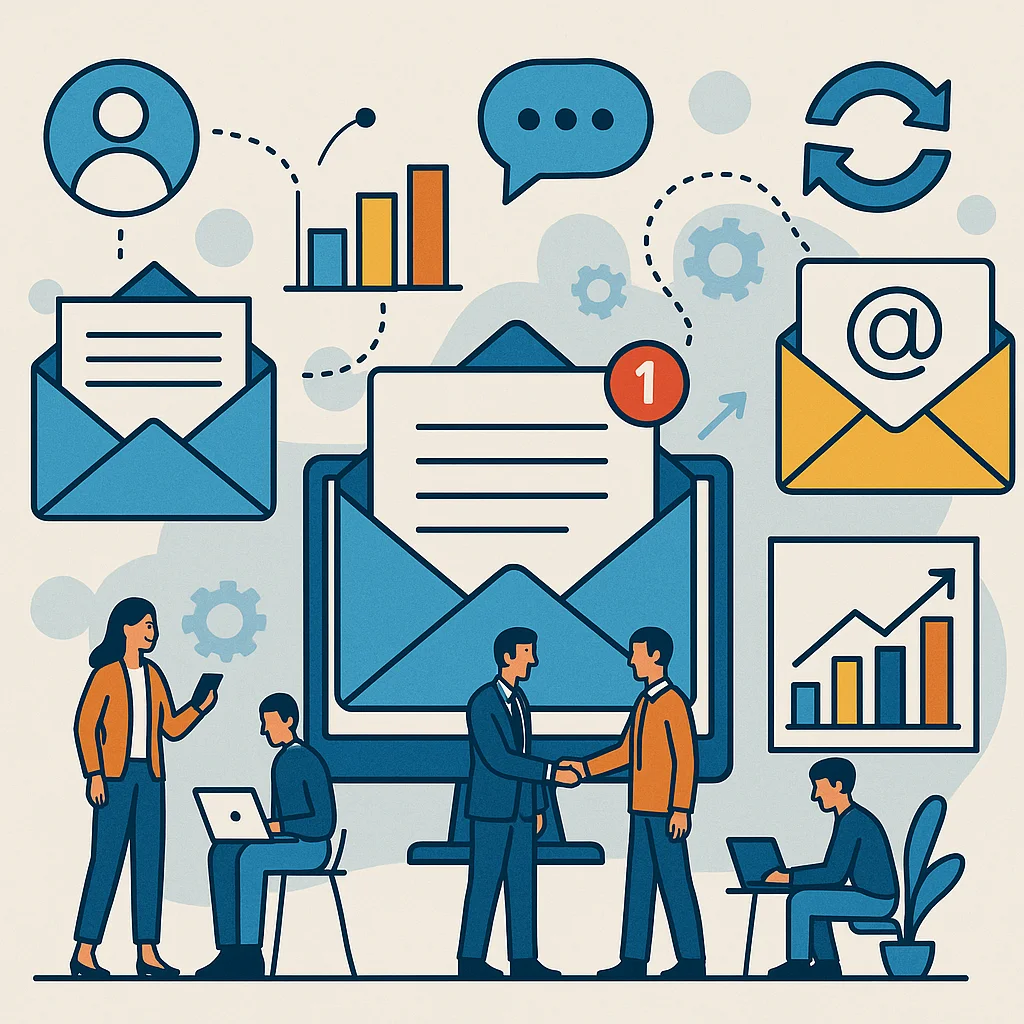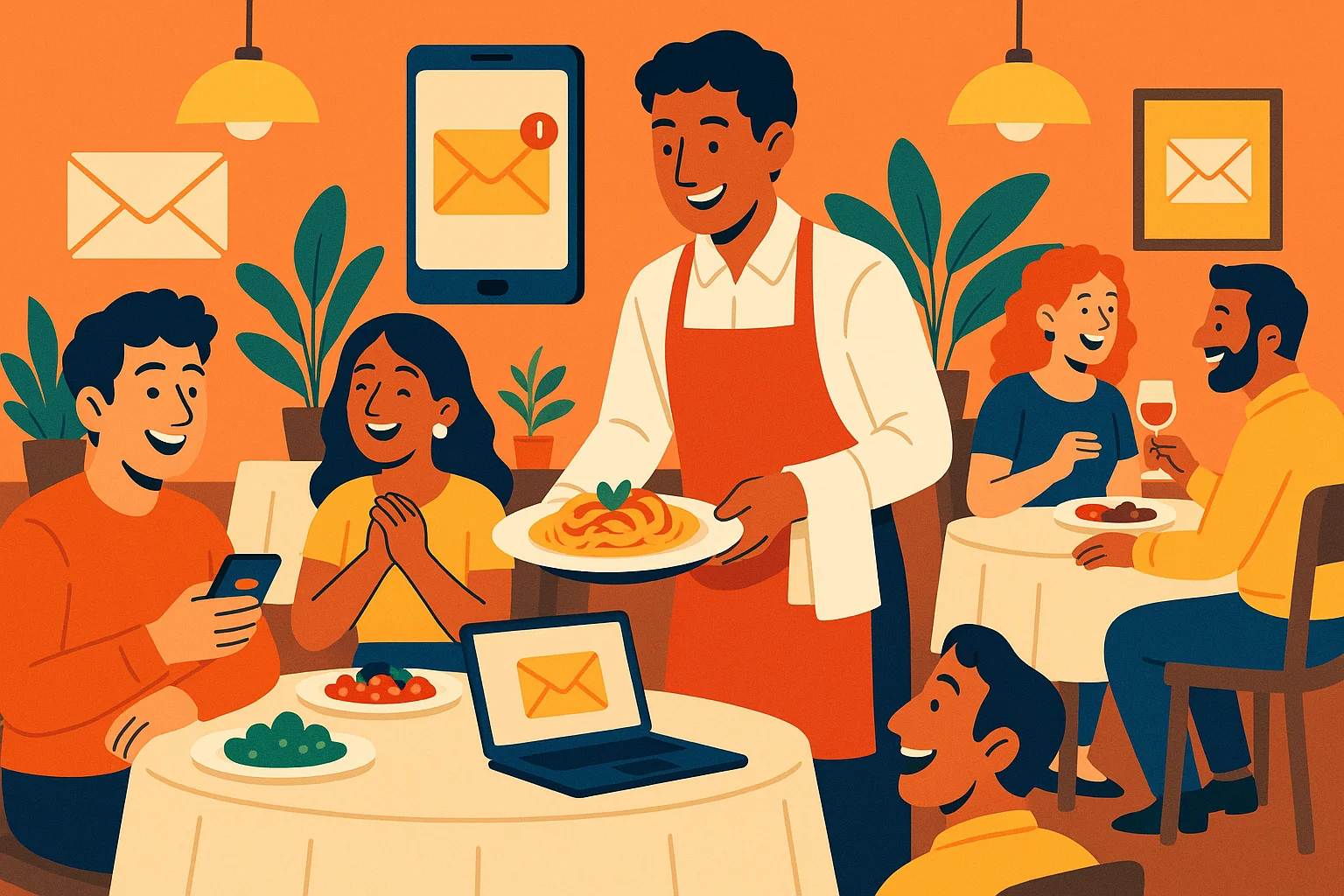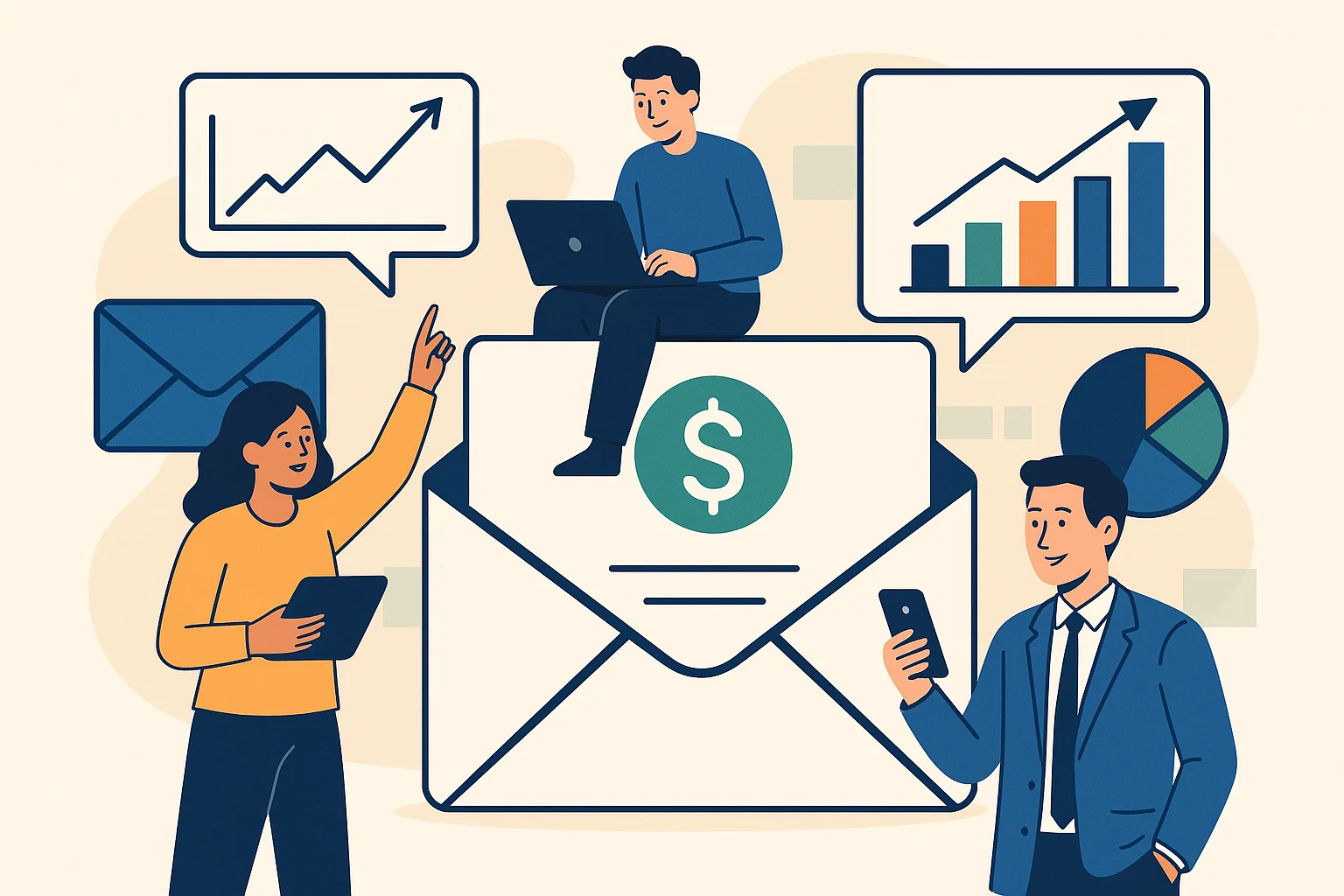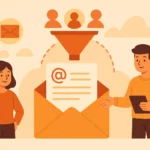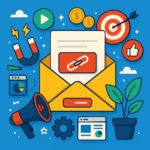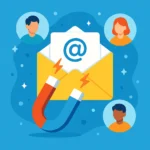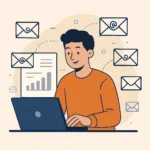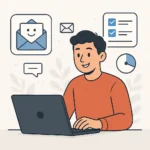Now Reading: Boost Response Rates With Email Marketing For Customer Surveys
-
01
Boost Response Rates With Email Marketing For Customer Surveys
Boost Response Rates With Email Marketing For Customer Surveys
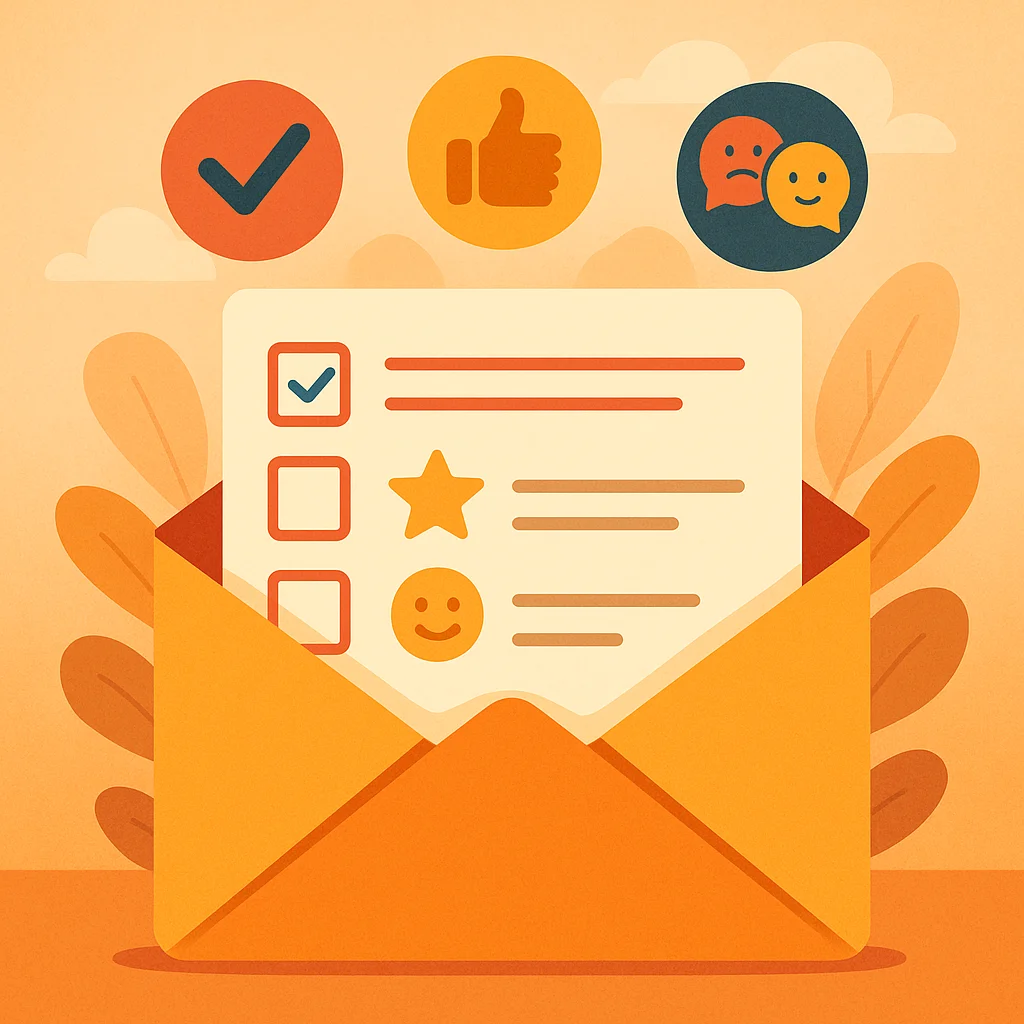
Here’s a stat that’ll make you rethink everything: 35% of people decide whether to open your survey email based purely on the subject line. That means before they even see your carefully crafted questions, most of your audience has already hit delete. But when you master email marketing for customer surveys, you’ll turn those delete-happy fingers into eager participants who actually want to share their thoughts.
Key Takeaways
How to use email marketing for customer surveys effectively:
- Segment your audience before sending surveys to ensure relevance and higher response rates
- Keep subject lines clear and intriguing – aim for under 10 words with action-oriented language
- Personalize your approach by addressing recipients by name and explaining why their feedback matters
- Offer incentives like discounts, gift cards, or exclusive content to encourage participation
- Time your surveys strategically – send customer satisfaction surveys immediately after interactions
- Design mobile-friendly surveys with clear calls-to-action and prominent survey links
- Use conversational tone in email copy to make surveys feel like friendly conversations, not interrogations
- Include survey duration in your invitation so people know the time commitment upfront
- Test your survey links and email formatting before sending to avoid technical issues
Crafting Survey Emails That People Actually Want To Open
Let’s be honest – most survey emails suck. They’re boring, pushy, and about as appealing as a root canal. But when you approach email marketing for customer surveys with the right strategy, you can turn those dreaded survey requests into opportunities for genuine connection.
The secret sauce isn’t in fancy design or clever tricks. It’s in understanding that behind every email address is a real person who’s probably drowning in their inbox. They don’t owe you their time, so you better make it worth their while.
Understanding Your Survey Objectives
Before you even think about hitting send, you need crystal-clear objectives. I can’t stress this enough – surveys without clear purposes are like road trips without destinations. You’ll waste everyone’s time and end up nowhere useful.
Ask yourself these questions:
- Why am I sending this survey?
- What specific decisions will I make with this data?
- How will this feedback improve my customer’s experience?
- Which customer segments need to receive this survey?
Your objectives might include understanding customer satisfaction levels, identifying product improvement opportunities, or gathering feedback about your support team’s performance. Whatever it is, write it down and keep it front and center throughout your email creation process.
Segmentation: The Foundation Of Effective Survey Emails
Here’s where most people mess up – they blast the same survey to everyone on their list. That’s like asking a vegetarian about their favorite steak recipe. Smart segmentation is what separates amateur hour from professional results.
You can segment based on:
- Purchase history and customer lifecycle stage
- Geographic location and demographics
- Previous interaction with your brand
- Product usage patterns
- Support ticket history
For example, if you’re gathering feedback about your physical store experience, only send that survey to customers who’ve actually visited your store. It sounds obvious, but you’d be amazed how many businesses skip this step.
Useful Articles:
Writing Subject Lines That Actually Get Opened
Your subject line is your first impression, your pickup line, your elevator pitch all rolled into one. Get it wrong, and your survey dies in the inbox. Get it right, and you’re halfway to survey success.
The Anatomy Of Clickable Subject Lines
Effective survey subject lines share these characteristics:
- Clear and specific – no mystery novels here
- Under 10 words – respect the mobile screen
- Action-oriented – use verbs that inspire movement
- Benefit-focused – what’s in it for them?
- Conversational tone – like you’re talking to a friend
Here are some subject lines that actually work:
Got a minute? We'd love your thoughts
Help us improve [specific product/service]
Quick favor? Your opinion matters
How did we do with your recent order?
30 seconds for 30% off your next purchasePersonalization Beyond First Names
Sure, using someone’s first name is nice, but real personalization goes deeper. Reference their specific interactions with your brand:
Subject: How was your stay at our downtown location, Sarah?
Subject: Thoughts on your new running shoes, Mike?
Subject: Quick question about yesterday's support chatThis approach shows you’re paying attention and makes the survey feel relevant to their actual experience.
Designing Survey Invitation Emails That Convert
Now we’re getting to the meat and potatoes. Your survey invitation email needs to do several things at once: grab attention, explain the purpose, set expectations, and motivate action. It’s like being a salesperson, therapist, and friend all in one email.
Essential Elements Of High-Converting Survey Emails
Every effective survey email includes these components:
1. Compelling subject line (we covered this)
2. Clear explanation of purpose – why you’re asking
3. Time commitment – how long it’ll take
4. Incentive or benefit – what’s in it for them
5. Prominent call-to-action – make it impossible to miss
6. Thank you in advance – show appreciation upfront
Survey Invitation Email Template
Here’s a template that consistently gets results:
Subject: Quick favor? Your opinion on [specific experience]
Hi [First Name],
Hope you're having a great day! I'm reaching out because your recent experience with [specific product/service/interaction] is exactly the kind of feedback that helps us improve.
Would you mind sharing your thoughts? It's just 5 quick questions and should take about 2 minutes.
As a thank you, I'll send you a 20% discount code for your next purchase once you complete the survey.
[TAKE THE SURVEY - prominent button]
Your feedback directly influences how we serve customers like you, so it really does make a difference.
Thanks in advance!
[Your name]
[Your title]
[Company name]
P.S. If you're not interested in surveys, just hit reply and let me know – I'll make sure you don't get any more survey requests.This template works because it’s personal, specific, respectful, and offers clear value.
Useful Articles:
Timing Your Survey Emails For Maximum Response
Timing isn’t everything, but it’s pretty darn close. Send your survey at the wrong time, and even the most brilliant email will flop. Send it at the right moment, and you’ll catch people when they’re most willing to help.
Strategic Timing Based On Survey Type
Different surveys require different timing strategies:
Customer satisfaction surveys should go out immediately after the interaction – within 24 hours if possible. The experience is fresh, emotions are real, and people remember details.
Product feedback surveys work best 1-2 weeks after purchase. This gives customers time to actually use what they bought but keeps the experience recent enough to remember.
General brand surveys can be sent monthly or quarterly, but avoid holiday seasons and busy periods specific to your industry.
Support experience surveys should be sent within hours of closing a support ticket. Strike while the iron’s hot.
Day And Time Optimization
Based on industry data, here’s when survey emails typically perform best:
- Tuesday through Thursday for B2B audiences
- Tuesday and Wednesday for B2C audiences
- 10 AM to 2 PM in the recipient’s time zone
- Avoid Mondays (people are catching up) and Fridays (people are checking out)
But here’s the thing – your audience might be different. Test different send times and track your open rates to find what works for your specific customers.
Creating Irresistible Survey Incentives
Let’s talk about bribes. I mean, incentives. People are busy, and their time has value. If you want them to spend that time helping you, you need to offer something worthwhile in return.
Types Of Incentives That Actually Work
Immediate discounts are the most popular and effective. A 15-20% discount code delivered instantly after survey completion works like magic.
Gift cards work well for longer surveys. Even a $5 gift card can significantly boost response rates for detailed feedback.
Exclusive content appeals to customers who love feeling special. Early access to new products, exclusive guides, or insider tips can be powerful motivators.
Contest entries work when you can’t afford individual incentives. A chance to win something valuable (like a year of free service) can drive participation.
Charitable donations appeal to socially conscious customers. “For every completed survey, we’ll donate $1 to [relevant charity]” can be surprisingly effective.
Incentive Email Template
Subject: 5 minutes = 25% off your next order
Hi [Name],
I've got a deal for you. Spend 5 minutes telling me about your recent experience with [product/service], and I'll send you a 25% discount code for your next purchase.
Fair trade?
The survey covers your experience from ordering to delivery, and your honest feedback helps us serve customers better.
[START SURVEY - Get My Discount]
You'll get your discount code immediately after completing the survey – no waiting, no hoops to jump through.
Thanks for helping us improve!
[Your name]Useful Articles:
Advanced Survey Email Strategies
Once you’ve mastered the basics, these advanced techniques can take your email marketing for customer surveys to the next level.
Progressive Profiling Through Sequential Surveys
Instead of hitting customers with one massive survey, break it into smaller, focused surveys over time. This progressive profiling approach feels less overwhelming and often yields better data quality.
For example:
- Week 1: Product satisfaction (3 questions)
- Week 4: Usage patterns (4 questions)
- Week 8: Feature requests (3 questions)
Embedded Survey Questions
Instead of always linking to external surveys, try embedding simple questions directly in your email. This works great for single-question surveys like Net Promoter Score.
Subject: Quick question about your recent purchase
Hi [Name],
How likely are you to recommend [product] to a friend?
😊 Very Likely 😐 Somewhat Likely 🙁 Not Likely
[Click your answer above]
That's it! Thanks for the feedback.
[Your name]Follow-Up Survey Sequences
Don’t give up after one email. A well-crafted follow-up sequence can double your response rates:
Email 1: Initial survey invitation
Email 2 (3 days later): Gentle reminder with different subject line
Email 3 (1 week later): Last chance with urgency
Reminder Email Template
Subject: Still hoping to hear from you
Hi [Name],
I sent you a quick survey about your recent experience with [product/service] last week, but I haven't heard back yet.
I get it – we're all drowning in emails. But your feedback really would help us improve, and it only takes 3 minutes.
[TAKE THE SURVEY]
If surveys aren't your thing, just hit reply and let me know. I'll remove you from future survey requests.
Thanks for considering it!
[Your name]Mobile Optimization For Survey Emails
Here’s a reality check: over 60% of emails are opened on mobile devices. If your survey emails aren’t mobile-friendly, you’re basically throwing away half your potential responses.
Mobile-First Email Design
Design your survey emails with mobile users in mind:
- Single column layout – no side-by-side elements
- Large, tappable buttons – make CTAs finger-friendly
- Scannable content – use bullet points and short paragraphs
- Readable font sizes – 14px minimum for body text
- Compressed images – fast loading is crucial
Mobile Survey Email Template
Subject: 2-minute survey on your phone
Hi [Name],
Quick question while you're on your phone:
How was your experience with our customer service yesterday?
[RATE YOUR EXPERIENCE]
(Big, mobile-friendly button)
Takes 2 minutes max, and you'll help us serve you better.
Thanks!
[Your name]Survey Email Automation And Triggers
Automation is where the magic happens. Instead of manually sending surveys, set up triggered emails that go out automatically based on customer actions.
Effective Survey Triggers
Post-purchase surveys trigger 7-14 days after a purchase, giving customers time to use the product.
Support interaction surveys trigger immediately after closing a support ticket.
Milestone surveys trigger after customers reach certain usage levels or anniversaries.
Abandonment surveys trigger when customers start but don’t complete a purchase, asking why they didn’t buy.
Automated Survey Email Template
Subject: How's your new [product] working out?
Hi [Name],
It's been two weeks since you got your [product], and I'm curious how it's working out for you.
Mind sharing your experience? It's just 4 quick questions:
[SHARE YOUR THOUGHTS]
Your feedback helps us improve our products and helps other customers make better decisions.
Plus, I'll send you a 15% discount for your next order as a thank you.
Appreciate your time!
[Your name]Analyzing Survey Email Performance
You can’t improve what you don’t measure. Track these key metrics to understand how your survey emails are performing:
Essential Metrics To Monitor
Open rates tell you if your subject lines are working. Industry average is around 20-25%, but aim higher.
Click-through rates show if your email content is compelling enough to drive action. Target 3-5% for survey emails.
Survey completion rates reveal if your survey design and incentives are effective. Aim for 15-25% completion rates.
Response quality matters more than quantity. Are you getting thoughtful, detailed responses or just quick clicks?
A/B Testing Survey Elements
Test these elements to optimize performance:
- Subject lines – try different lengths, tones, and approaches
- Send times – find when your audience is most responsive
- Incentives – test different offers and amounts
- Email length – shorter isn’t always better
- CTA placement – try different positions and wording
Using email marketing for customer surveys effectively isn’t rocket science, but it does require thoughtfulness, respect for your customers’ time, and a willingness to continuously improve your approach. When you get it right, you’ll not only gather valuable feedback but also strengthen your relationships with customers who appreciate being heard.


